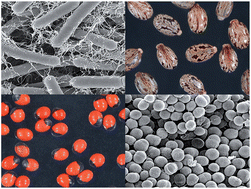Simultaneous quantification of five bacterial and plant toxins from complex matrices using a multiplexed fluorescent magnetic suspension assay†
Abstract
Proteotoxins such as ricin, abrin, botulinum

* Corresponding authors
a
Center for Biological Safety, Microbial Toxins (ZBS3), Robert Koch-Institut, Nordufer 20, 13353 Berlin, Germany
E-mail:
DornerB@rki.de
Fax: +49 30 18754 2501
Tel: +49 30 18754 2500
b Institute of Pharmacology CCM/CBF, Charité-Universitätsmedizin Berlin, Dorotheenstrasse 94, 10117 Berlin, Germany
c LABOR SPIEZ, 3700 Spiez, Switzerland
Proteotoxins such as ricin, abrin, botulinum

 Please wait while we load your content...
Something went wrong. Try again?
Please wait while we load your content...
Something went wrong. Try again?
D. Pauly, S. Kirchner, B. Stoermann, T. Schreiber, S. Kaulfuss, R. Schade, R. Zbinden, M. Avondet, M. B. Dorner and B. G. Dorner, Analyst, 2009, 134, 2028 DOI: 10.1039/B911525K
To request permission to reproduce material from this article, please go to the Copyright Clearance Center request page.
If you are an author contributing to an RSC publication, you do not need to request permission provided correct acknowledgement is given.
If you are the author of this article, you do not need to request permission to reproduce figures and diagrams provided correct acknowledgement is given. If you want to reproduce the whole article in a third-party publication (excluding your thesis/dissertation for which permission is not required) please go to the Copyright Clearance Center request page.
Read more about how to correctly acknowledge RSC content.
 Fetching data from CrossRef.
Fetching data from CrossRef.
This may take some time to load.
Loading related content
